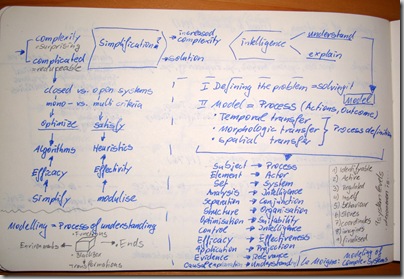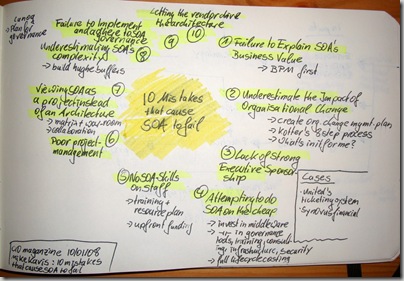Eriksson, Darek: A Principal Exposition of Jean-Louis Le Moignes Systemic Theory; in: „Cybernetics and Human Knowing“. Vol. 4 (1997), No. 2-3.
When thinking about complexity and systems one sooner or later comes across Le Moigne. Departing point is the dilemma of simplification vs. intelligence. Therefore systems have to be distinguished to be either complicated = that is they are reducible, or to be complex = show surprising behaviour.
Complicated vs. Complex
This distinction follows the same lines as closed vs. open systems, and mono- vs. multi-criteria optimisation. Closed/mono-criteria/complicated systems can be optimised using algorithms, simplifying the system, and evaluating the solution by its efficacy. On the other hand, open/multi-criteria/complex systems can only be satisfied by using heuristics, breaking down the system into modules, and evaluating the solution by its effectivity.
In the case of complex systems simplification only increases the complexity of the problem and will not yield a solution to the problem. Instead of simplification intelligence is needed to understand and explain the system, in other words it needs to be modelled. As Einstein already put it – defining the problem is solving it.
Secondly, to model a complex system is to model a process of actions and outcomes. The process definition consists of three transfer functions – (1) temporal, (2) morphologic, and (3) spatial transfer. In order to make the step from modelling complicated system to modelling complex systems some paradigms need to change:
- Subject –> Process
- Elements –> Actors
- Set –> Systems
- Analysis –> Intelligence
- Separation –> Conjunction
- Structure –> Organisation
- Optimisation –> Suitability
- Control –> Intelligence
- Efficacy –> Effectiveness
- Application –> Projection
- Evidence –> Relevance
- Causal explanation –> Understanding
The model itself follows a black box approach. For each black box, its function, its ends = objective, its environment, and its transformations need to be modelled. Furthermore the modelling itself understands and explains a system on nine different levels. A phenomena is
- Identifiable
- Active
- Regulated
- Itself
- Behaviour
- Stores
- Coordinates
- Imagines
- Finalised


